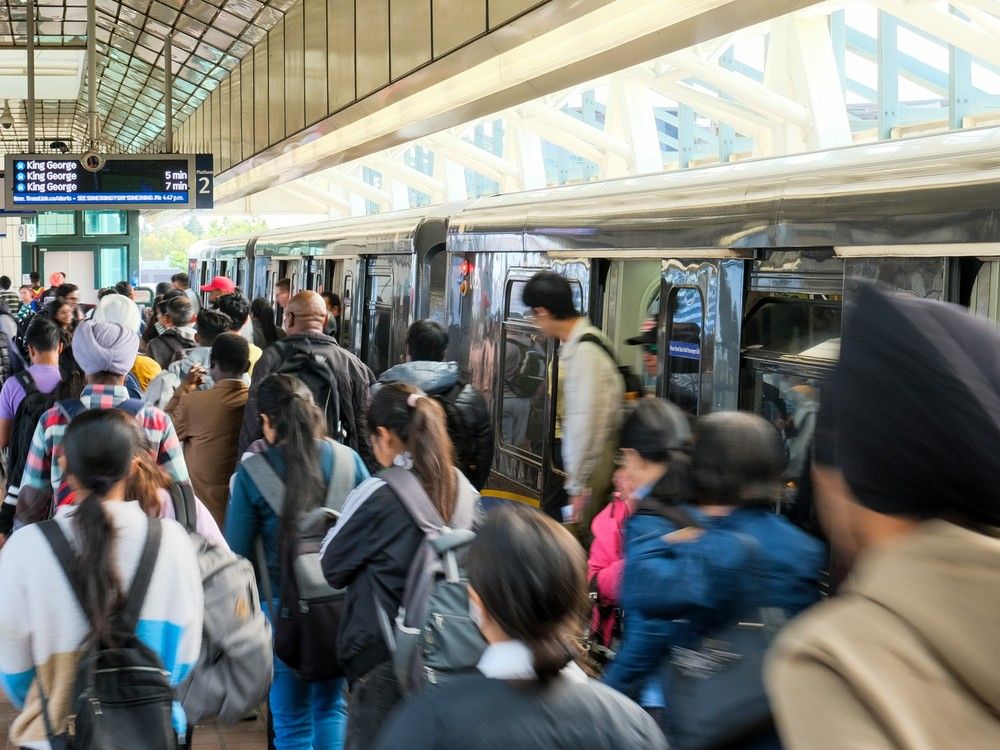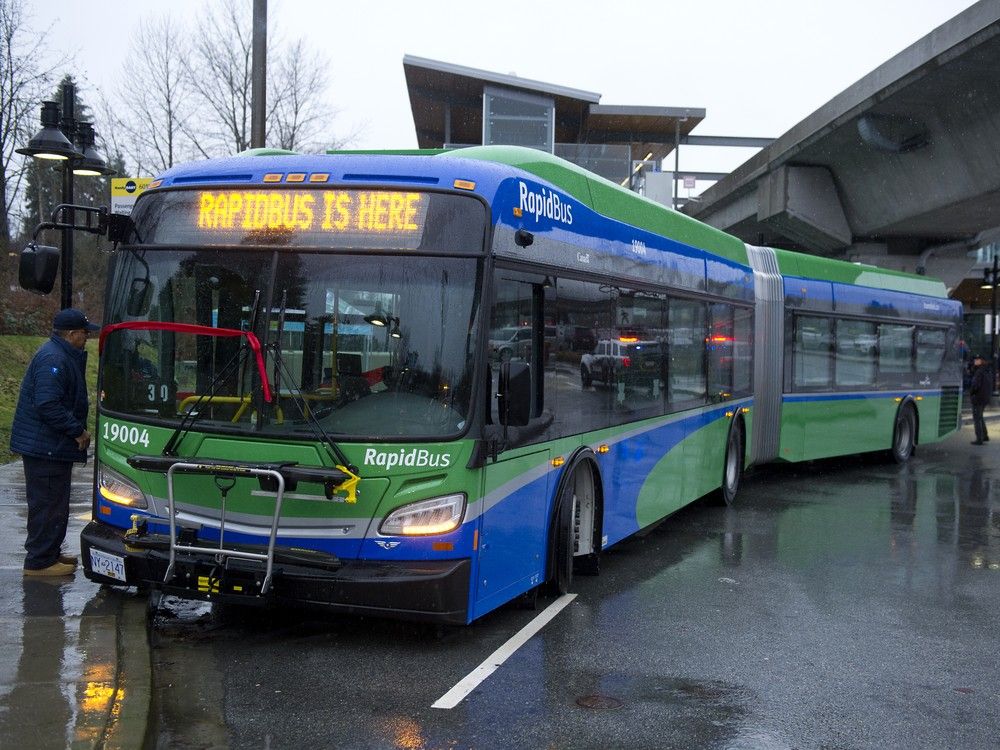
Booming transit use south of the Fraser River has propelled TransLink’s overall ridership in 2024 to near pre-pandemic levels and, on a per capita basis, surpassed Toronto’s TTC and remained second only to Montreal’s STM.
TransLink’s R6 Scott Road-Newton Exchange route in Surrey was brand new in 2024, but quickly became the transit agency’s sixth busiest route with 5.16 million boardings, which is emblematic of the system’s overall growth, according to the agency’s 2024 service performance review.
TransLink said in its 2024 service performance review that passengers took 240.9 million trips on buses, SkyTrain, the Canada Line and SeaBus, which was 7.7 million more than in 2023. The rate outpaced the increase in drivers on Metro Vancouver roads over the same period.
Most of those new trips were due to an 11.4 increase in ridership on routes in Surrey, North Delta, White Rock and Langley. And while TransLink had ridership increase by three per cent, trips by car rose only one per cent — something that transit advocate Denis Agar said squelches the myth that no one wants to take transit, even in car-dominant suburbs such as Surrey.
“(Surrey) has transit ridership that rivals major American cities, even in their urban cores,” said Agar, executive director of the advocacy group Movement: Metro Vancouver Transit Riders.
Agar noted that the biggest increases in ridership were on routes where TransLink made big improvements, such as with the expanding existing service into the R6 Scott Road route, increasing frequency on the 321 Surrey Central Station to White Rock route, and on the 323 Surrey Central Station to Newton route.
“Really, the story to me is that frequency attracts riders and we basically have this ‘easy button’ to press to decongest our streets and to give people more access to jobs and housing and education,” Agar said. “And that’s to just run more buses.”
However, Agar said Movement’s analysis of TransLink’s data shows the opposite is also true that “reduced service drives people away from transit.”
Agar mentioned the 8 Fraser bus in Vancouver, which had frequency cut to service every 15 minutes from the level of service every six minutes that was in place in 2019, and ridership following COVID 19 restrictions has only recovered to 47 per cent of prior levels.
“TransLink should definitely keep advocating for more funding,” Agar said. “We have an increase in funding of five per cent between now and 2027, which is not enough and they know that.”
The transit authority had to make hard choices to reduce services in Vancouver, Burnaby and New Westminster in order to reallocate buses to high-growth Surrey and Langley, said TransLink spokesperson Dan Mountain
However, Mountain said the interim funding deal TransLink struck with the province in its 2025 investment plan will allow it to reverse some of those cuts.
“The good news is that now, with the funding acquired through the 2025 investment plan, we will be able to expand service across the board without having to reallocate service,” Mountain said. “(But) we acknowledge that those three years really did have an impact on some of those slower-to-recover routes.”

Decisions on increasing frequency will be driven by data on where demand for service and where routes are overcrowded, Mountain said.
“The 2025 investment plan will increase service on 50 of the most overcrowded bus routes throughout the region,” Mountain said. “(That) includes many routes in Vancouver and UBC and in the downtown core.”
Mountain said the 2024 performance review demonstrated that there is growing demand for service, that increasing service encourages people to get out of their cars and is “a testament to a reliable system.”
Its RapidBus service, for instance, consists of just six routes on the North Shore, in Vancouver, Surrey and the Tri Cities to Maple Ridge, but they averaged 20,600 boardings in 2024 — 15 per cent of the total.
Ridership on SkyTrain’s Expo and Millennium Lines were up six per cent to 348,907 boardings on the average week day, on the Canada Line it was four per cent to 132,307 boardings. The SeaBus’ ridership was lower at 16,633 per average week day, but that represented a five per cent increase.
But ridership on most of TransLink’s Top 10 busiest bus routes declined.
The 99 B-Line from Commercial Drive SkyTrain Station to UBC, for instance, was down six per cent to 10.6 million boardings in all of 2024 from 11.3 million in 2023. On the R5 Hastings, which runs from Burrard Street to Simon Fraser University, was also down seven per cent to 4.4 million from 4.6 million in 2023.
The reasons behind that, however, are difficult to parse out because some of the significant increases in service on routes across the region took effect last September, Mountain said.
Mountain said numbers from the 2024 service performance review also reinforce the growth trend TransLink started seeing south of the Fraser in the fast-growing suburbs of Surrey, Langley and Delta.
TransLink is adding or upgrading seven bus routes through industrial areas or office parks, such as South Newton, Campbell Heights and 88th Avenue in Surrey Mountain said. And 25 of the 50 routes due for increased service are south of the Fraser.
“The 2025 investment plan was absolutely made with south of the Fraser in mind,” Mountain said. “It’s been booming not just last year but for, I’d say, really every year since the pandemic.”